Understanding the parasite challenge on your pasture is critical in determining how best to manage anthelmintics to maintain their efficacy. At this time of year, the only parasites affecting weaned grazing lambs are strongyles. Nematodirus and coccidia generally do not cause problems in weaned lambs.
When we talk about strongyle worms from a control strategy perspective we divide them in to two categories – susceptible worms (ie those that an anthelmintic/wormer will kill) and resistant worms (ie those that will survive the dose).
On sheep farms, the parasite challenge, or the burden that lambs are exposed to, varies depending on how the pasture has been previously managed.
In general, we can divide the available pasture on farms into three categories, as below.
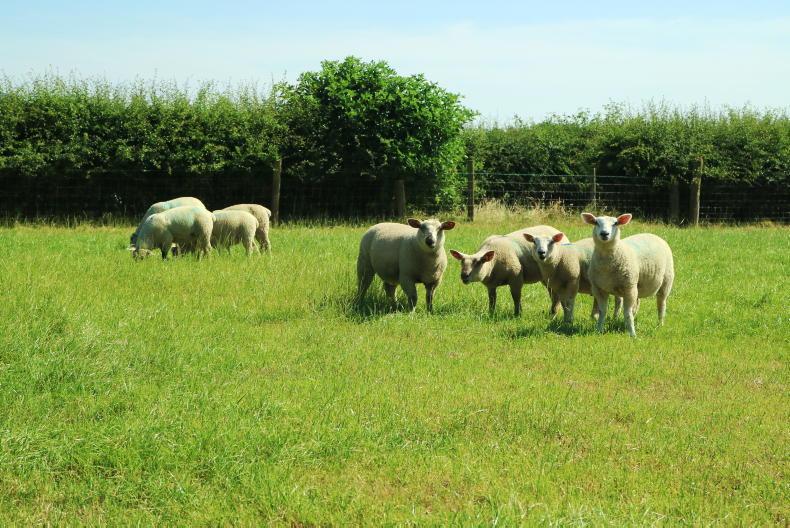
Dirty pasture.
This is pasture that has been under continual sheep grazing for a number of years and is often referred to as sheep sick. The pasture will be heavily contaminated with both susceptible and resistant worm eggs and larvae. We consider the level of parasite challenge to be high on these pastures and posing a significant risk to grazing animals.
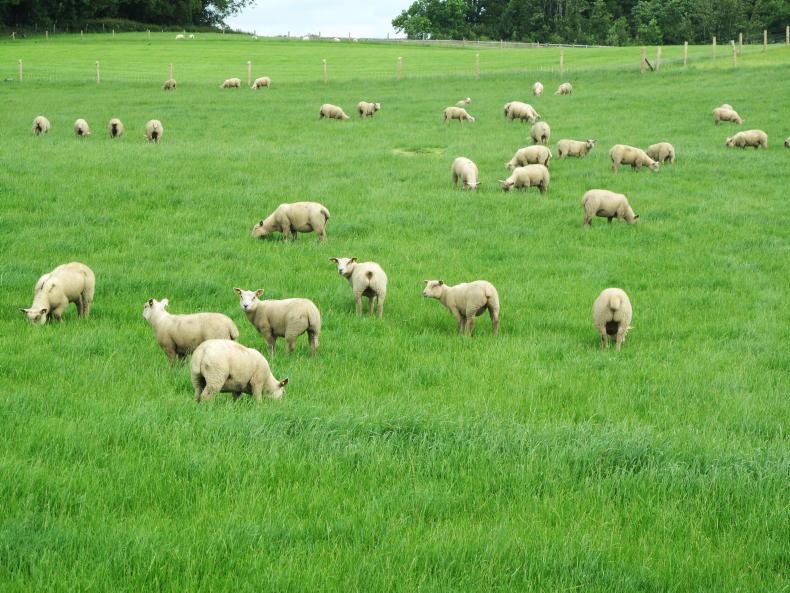
Cleaner pasture.
This pasture is pasture that has not been continuously grazed by sheep but has had some level of sheep grazing during the year. Typically, this will be pasture that has been grazed by cattle or cut for silage during the year (aftergrass). Reseeds may also fall into this category depending on how they were managed previously. We consider the parasite challenge on this type of pasture to be low.
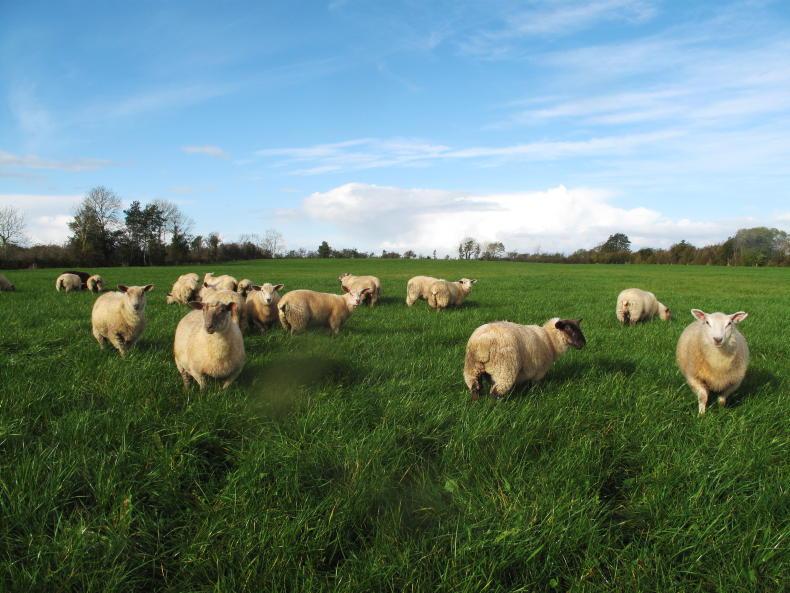
Clean pasture.
Clean pasture is pasture that has not been grazed by sheep for at least two years. In practical terms, this is pasture that may have been exclusively grazed by adult cattle or in a tillage enterprise for a number of years and is now destined to be grazed by sheep. There is no parasite challenge on this pasture.
Emergence of anthelmintic resistance
Over the past 15 years, a number of studies have identified that Irish sheep farmers have increasing levels of anthelmintic resistant parasites on their farms.
How we manage our anthelmintics (wormers) into the future will be critical to the speed at which this resistance escalates at individual farm level.
The aim of every sheep farmer should be to take steps to delay or manage anthelmintic resistance development on their farms.
From a lamb performance perspective, grazing lambs on cleaner or clean pasture will maximise lamb performance due to the reduced worm challenge. This is a significant bonus, particularly post weaning.
However, there is a trade-off between maximising lamb performance and maintaining a susceptible parasite population and this is where it becomes important to understand what type of pasture your lambs are grazing.
We need to consider how we manage pasture to help maintain a susceptible worm population, ie keep a population of worms that the dosing products we use on farms are effective against. This is particularly important for “clean” and “cleaner” pastures.
No wormer will kill 100% of the worms present in the sheep
While this may seem like a contradiction it is important to understand what happens when we treat lambs with an anthelmintic (wormer). Every time we treat lambs with an anthelmintic we expose the worms in the lambs digestive tract to this product.
No wormer will kill 100% of the worms present in the sheep. As a population of worms is continually exposed to a particular anthelmintic class, the number of resistant worms to that class increases. This is genetic resistance that the worms have developed and this resistance is passed on to their offspring.
So when we treat sheep with an anthelmintic that certain worms have developed resistance to, all the susceptible worms will all be killed and only the resistant ones will survive. When resistant worms mate and lay eggs, these are subsequently passed out on pasture.
Every time that lambs graze this pasture they are picking up more and more resistant worms and spreading them around the rest of the farm
This gives the resistant worms a competitive advantage over the susceptible ones. A consequence of continually treating with an ineffective wormer is that it leads to a shift in the worm population on pasture. Unfortunately, this shift is in favour of the resistant worms.
Every time that lambs graze this pasture they are picking up more and more resistant worms and spreading them around the rest of the farm. Remember these resistant worms won’t be killed off effectively by the wormer and your animals will be exposed to a worm population with a higher percentage of resistant worms which, in turn, can greatly hinder performance.
So why is it important to consider where we turn lambs out to after dosing?
For dirty pasture, the population of worms in refugia (worms not exposed to the dose) is typically 100 to 10,000 times greater than that exposed in lambs. Therefore, the worm population is much larger and can dilute the negative effect of resistant worms being passed. This is still an issue but it has a smaller negative effect on spreading resistance.
For cleaner pasture, the population of worms is much smaller and as a consequence there are less susceptible worms to dilute out the resistant ones being passed out by lambs.
As more resistant worms are passed out following a dose, it has a detrimental effect on the worm population present on pasture and can tip it in favour of resistant ones developing at a faster rate.
Safeguarding clean pasture
Clean pasture presents the biggest challenge as there is no worm population present to dilute the resistant ones that will be passed out post dosing. Potentially the only worm present will be resistant ones.
Following this, every time sheep graze this pasture they will only pick up resistant worms and help spread them around the rest of the farm – thereby speeding up the development of resistant parasites on the farm.
To reduce the risk of this occurring, we need to consider “seeding” or exposing this pasture to susceptible worms. This can be achieved by either delaying dosing when turning on to this ground and allowing sheep with a low worm burden to graze it initially or follow them with undosed sheep.
Always try on this type of pasture, even in subsequent rotations, to graze this with lambs that have been grazing for a period on dirty pasture and not with ones that have just been dosed.
Every time a new sheep enters the farm they could be carrying resistant worms from the farm of origin on to your farm – which is not something you want. This is one of the ways resistance has spread from flock to flock and it is capable of undoing the good work of managing anthelmintic resistance up to this point.
So in order to prevent this, we need to quarantine dose these sheep upon arrival to clean out any worm burden they may be carrying.
This is one of the few times where it is recommended to dose adult sheep.
It is important that these sheep go directly from the trailer to a shed and are not turned out to pasture, even for a brief period. It is recommended that one of the two new anthelmintic groups is used as part of the quarantine treatment. These are either group 4-AD (Monapantel) sold under the trade name of Zolvix or group 5-SI (Spiroindoles) sold under the trade name of Startect, which is unavailable in the Irish market at present.
In order to protect these two new classes of anthelmintic it is advisable to use them with one of the existing wormers that works on your farm such as:
A: Group 4-AD + Group 2-LV or Group 3-ML. B: Group 5-SI + Group 2-LV product.As Startect contains an Abermectin (Group 3-ML) component, it is recommended it is used in combination with a Group 2- LV levamisole. Remember, it is essential to ensure the correct volume of dose is delivered for the animal being treated. This is particularly important in the case of adult sheep where an inaccurate estimation of weights is a significant risk.
Digestive tract
Once the sheep are dosed, they should be housed for a minimum of 24 hours and ideally 48 hours to prevent any resistant worms that may be in the digestive tract passing out on to your pasture.
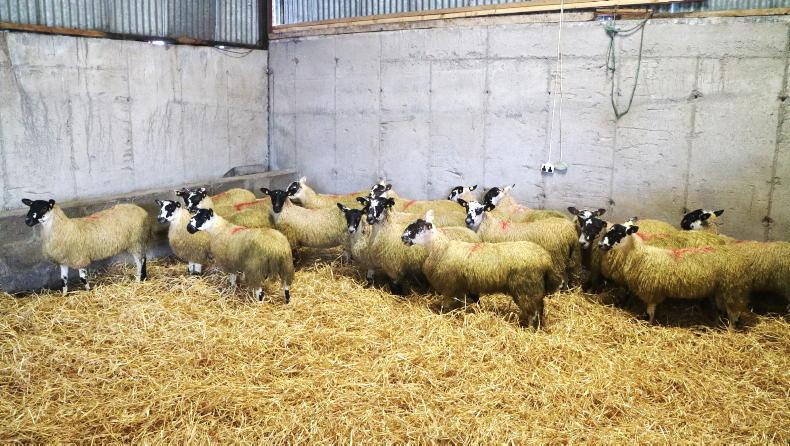
Any sheep coming on to the farm should be quarantined with this including worm treatment and housing for the at least the first 24 hours and ideally 48 hours.
Following the housing period the sheep should be turned out on to dirty pasture to pick up the worm population on your own farm.
More details
Teagasc has a dedicated landing page on its website containing informative videos and resource material on many aspects of anthelmintic resistance and the actions you can take on your own farm. To visit, click here.
Understanding the parasite challenge on your pasture is critical in determining how best to manage anthelmintics to maintain their efficacy. At this time of year, the only parasites affecting weaned grazing lambs are strongyles. Nematodirus and coccidia generally do not cause problems in weaned lambs.
When we talk about strongyle worms from a control strategy perspective we divide them in to two categories – susceptible worms (ie those that an anthelmintic/wormer will kill) and resistant worms (ie those that will survive the dose).
On sheep farms, the parasite challenge, or the burden that lambs are exposed to, varies depending on how the pasture has been previously managed.
In general, we can divide the available pasture on farms into three categories, as below.

Dirty pasture.
This is pasture that has been under continual sheep grazing for a number of years and is often referred to as sheep sick. The pasture will be heavily contaminated with both susceptible and resistant worm eggs and larvae. We consider the level of parasite challenge to be high on these pastures and posing a significant risk to grazing animals.

Cleaner pasture.
This pasture is pasture that has not been continuously grazed by sheep but has had some level of sheep grazing during the year. Typically, this will be pasture that has been grazed by cattle or cut for silage during the year (aftergrass). Reseeds may also fall into this category depending on how they were managed previously. We consider the parasite challenge on this type of pasture to be low.

Clean pasture.
Clean pasture is pasture that has not been grazed by sheep for at least two years. In practical terms, this is pasture that may have been exclusively grazed by adult cattle or in a tillage enterprise for a number of years and is now destined to be grazed by sheep. There is no parasite challenge on this pasture.
Emergence of anthelmintic resistance
Over the past 15 years, a number of studies have identified that Irish sheep farmers have increasing levels of anthelmintic resistant parasites on their farms.
How we manage our anthelmintics (wormers) into the future will be critical to the speed at which this resistance escalates at individual farm level.
The aim of every sheep farmer should be to take steps to delay or manage anthelmintic resistance development on their farms.
From a lamb performance perspective, grazing lambs on cleaner or clean pasture will maximise lamb performance due to the reduced worm challenge. This is a significant bonus, particularly post weaning.
However, there is a trade-off between maximising lamb performance and maintaining a susceptible parasite population and this is where it becomes important to understand what type of pasture your lambs are grazing.
We need to consider how we manage pasture to help maintain a susceptible worm population, ie keep a population of worms that the dosing products we use on farms are effective against. This is particularly important for “clean” and “cleaner” pastures.
No wormer will kill 100% of the worms present in the sheep
While this may seem like a contradiction it is important to understand what happens when we treat lambs with an anthelmintic (wormer). Every time we treat lambs with an anthelmintic we expose the worms in the lambs digestive tract to this product.
No wormer will kill 100% of the worms present in the sheep. As a population of worms is continually exposed to a particular anthelmintic class, the number of resistant worms to that class increases. This is genetic resistance that the worms have developed and this resistance is passed on to their offspring.
So when we treat sheep with an anthelmintic that certain worms have developed resistance to, all the susceptible worms will all be killed and only the resistant ones will survive. When resistant worms mate and lay eggs, these are subsequently passed out on pasture.
Every time that lambs graze this pasture they are picking up more and more resistant worms and spreading them around the rest of the farm
This gives the resistant worms a competitive advantage over the susceptible ones. A consequence of continually treating with an ineffective wormer is that it leads to a shift in the worm population on pasture. Unfortunately, this shift is in favour of the resistant worms.
Every time that lambs graze this pasture they are picking up more and more resistant worms and spreading them around the rest of the farm. Remember these resistant worms won’t be killed off effectively by the wormer and your animals will be exposed to a worm population with a higher percentage of resistant worms which, in turn, can greatly hinder performance.
So why is it important to consider where we turn lambs out to after dosing?
For dirty pasture, the population of worms in refugia (worms not exposed to the dose) is typically 100 to 10,000 times greater than that exposed in lambs. Therefore, the worm population is much larger and can dilute the negative effect of resistant worms being passed. This is still an issue but it has a smaller negative effect on spreading resistance.
For cleaner pasture, the population of worms is much smaller and as a consequence there are less susceptible worms to dilute out the resistant ones being passed out by lambs.
As more resistant worms are passed out following a dose, it has a detrimental effect on the worm population present on pasture and can tip it in favour of resistant ones developing at a faster rate.
Safeguarding clean pasture
Clean pasture presents the biggest challenge as there is no worm population present to dilute the resistant ones that will be passed out post dosing. Potentially the only worm present will be resistant ones.
Following this, every time sheep graze this pasture they will only pick up resistant worms and help spread them around the rest of the farm – thereby speeding up the development of resistant parasites on the farm.
To reduce the risk of this occurring, we need to consider “seeding” or exposing this pasture to susceptible worms. This can be achieved by either delaying dosing when turning on to this ground and allowing sheep with a low worm burden to graze it initially or follow them with undosed sheep.
Always try on this type of pasture, even in subsequent rotations, to graze this with lambs that have been grazing for a period on dirty pasture and not with ones that have just been dosed.
Every time a new sheep enters the farm they could be carrying resistant worms from the farm of origin on to your farm – which is not something you want. This is one of the ways resistance has spread from flock to flock and it is capable of undoing the good work of managing anthelmintic resistance up to this point.
So in order to prevent this, we need to quarantine dose these sheep upon arrival to clean out any worm burden they may be carrying.
This is one of the few times where it is recommended to dose adult sheep.
It is important that these sheep go directly from the trailer to a shed and are not turned out to pasture, even for a brief period. It is recommended that one of the two new anthelmintic groups is used as part of the quarantine treatment. These are either group 4-AD (Monapantel) sold under the trade name of Zolvix or group 5-SI (Spiroindoles) sold under the trade name of Startect, which is unavailable in the Irish market at present.
In order to protect these two new classes of anthelmintic it is advisable to use them with one of the existing wormers that works on your farm such as:
A: Group 4-AD + Group 2-LV or Group 3-ML. B: Group 5-SI + Group 2-LV product.As Startect contains an Abermectin (Group 3-ML) component, it is recommended it is used in combination with a Group 2- LV levamisole. Remember, it is essential to ensure the correct volume of dose is delivered for the animal being treated. This is particularly important in the case of adult sheep where an inaccurate estimation of weights is a significant risk.
Digestive tract
Once the sheep are dosed, they should be housed for a minimum of 24 hours and ideally 48 hours to prevent any resistant worms that may be in the digestive tract passing out on to your pasture.

Any sheep coming on to the farm should be quarantined with this including worm treatment and housing for the at least the first 24 hours and ideally 48 hours.
Following the housing period the sheep should be turned out on to dirty pasture to pick up the worm population on your own farm.
More details
Teagasc has a dedicated landing page on its website containing informative videos and resource material on many aspects of anthelmintic resistance and the actions you can take on your own farm. To visit, click here.





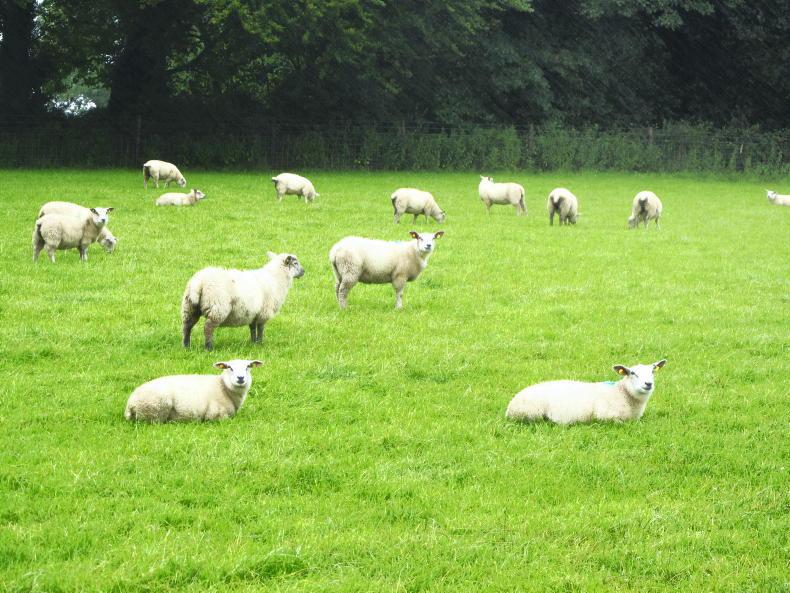




 This is a subscriber-only article
This is a subscriber-only article











SHARING OPTIONS: